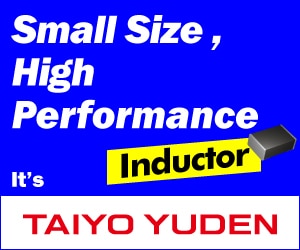Toshiba Group (“Toshiba”) has announced on December 27th, 2021, the world’s first demonstration of HDD recording performance improvement with Microwave Assisted Switching-Microwave Assisted Magnetic Recording (MAS-MAMR), a next-generation magnetic recording technology. The demonstration confirms that the technology delivers substantial storage capacity gains, and Toshiba now aims to realise early commercialisation of nearline HDDs with capacities exceeding 30TB.
Toshiba is placing considerable R&D effort on MAMR, a breakthrough technology that boosts HDD recording density. In 2021, the company started shipment of 18TB HDDs that apply Flux Control MAMR (FC-MAMR), which uses spin torque oscillators to assist recording. MAS-MAMR is expected to improve recording density beyond that of FC-MAMR by locally exposing microwave to recording media. However, this was not shown to be possible in practice until the recent demonstration.
Toward proving the fundamental superiority of MAS-MAMR, Toshiba has been promoting its development with Showa Denko K.K. (SDK), an HDD medium manufacturer, and TDK Corporation (TDK), a HDD head manufacturer. This three-way cooperation recently bore fruit in the demonstration of MAS-MAMR’s improved recording performance.
Toshiba will announce details of the newly developed spin torque oscillator and its oscillation characteristics at the Joint MMM-INTERMAG Conference 2022, an international conference scheduled on January 10th – 14th, 2022.

Development Background
Digital data storage on data centers is a pillar of the modern information infrastructure supporting digitisation and digital transformation, and is now more important than ever due to the COVID-19 pandemic.
Continuing storage demand is on explosive pace, and the market for high-capacity nearline HDDs, the workhorses of both cloud-scale and traditional data centers, is expected to grow to US$17.5 billion in 2025. This evolving needs for storage devices are also fueling demand for further capacity increases in HDDs.
Any attempt to increase the recording density of an HDD must reconcile a trilemma of three conflicting goals: miniaturise the magnetic grains on the recording medium; realise thermally stable magnetic grains; and secure sufficient recording performance. The recording medium is coated with a layer of fine magnetic grains that retain information according to the direction of their magnetisation. While recording density could be improved by miniaturisation of the recording bit on the recording media, this requires even smaller magnetic grains, which reduces thermal stability of their magnetisation. Loss of thermal stability may result in data losses.
Increasing thermal stability on increasing recording density requires a material with a higher “coercivity” that can maintain the magnetisation. However, a higher coercivity makes it difficult for the recording head to generate the sufficient magnetic field for recording. Overcoming this requires next-generation magnetic recording technology in which recording is assisted by external energy.
Advances are being made in R&D of a next-generation magnetic recording technology to overcome this trilemma. While MAS-MAMR to assist using microwaves is expected to improve the recording density drastically in theory, the confirmation of microwave-assisted switching effect (MAS-MAMR effect) on recording condition and improved recording performance with MAS-MAMR have not yet been demonstrated.
Features of the Technology
Toshiba has invented a “bi-oscillation type spin torque oscillator device (dual FGL STO)” that irradiates microwaves by a two-layer field generating layer. The “dual FGL STO” generates microwaves efficiently, with less current and on focused spots. Incorporated into a recording head, it can improve recording performance with MAS-MAMR.
In the work to demonstrate MAS-MAMR, TDK has developed new recording heads equipped with the STO, SDK has developed new recording media, and Toshiba has confirmed stable oscillation of STOs in the new recording heads.
Subsequently, Toshiba confirmed the MAS-MAMR effect by combining the newly developed STOs, recording heads and media, and for the first time in the world demonstrated an approximately 6dB improvement in recording performance with MAS-MAMR. This technology makes it possible to realise HDDs with large capacity of over 30TB. By the demonstration, MAS-MAMR has taken a major step forward as a practical next-generation magnetic recording technology that can significantly improve recording density.








